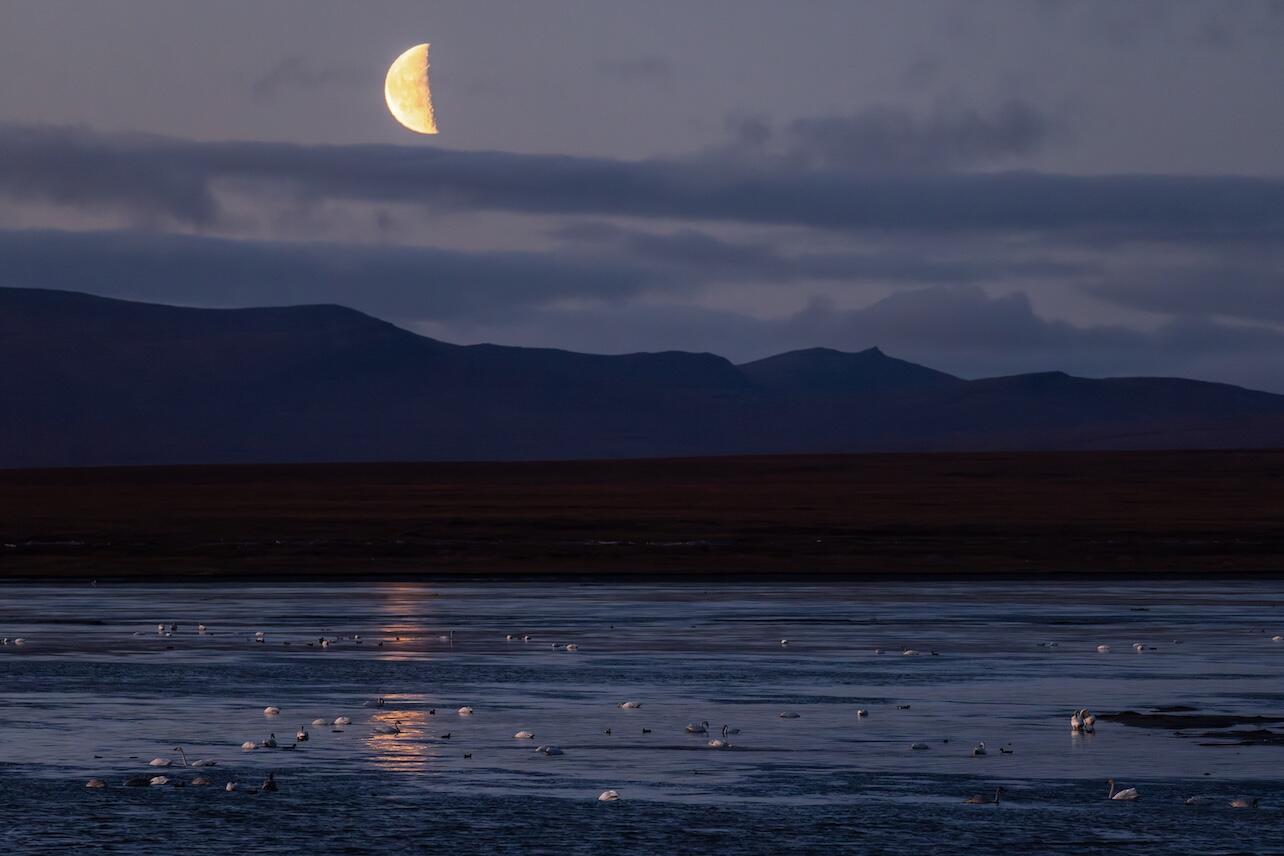Tucked along the southern coast of the Seward Peninsula, about 25 miles east of Nome, is the Safety Sound and Bonanza Channel estuary. Formally recognized by both Audubon and the American Bird Conservancy as an Important Bird Area (IBA), this 98,400-acre site is an ecologically unique habitat with great importance to both birds and people.
The Safety Sound IBA includes four major rivers and is formally classified as being an estuarine and marine wetland tidal habitat. These ecologically rich deltas support a variety of submerged aquatic vegetation types, including eel grass, and serve as essential fish habitat for a variety of species. Chum salmon, humpback whitefish, and Dolly Varden char, among other fish, utilize these habitats to complete their life cycle and support the surrounding ecosystem.
Numerous species of seabirds, shorebirds, and migratory waterfowl utilize the Safety Sound IBA, including species that are listed as declining on Audubon Alaska’s Watchlist and others that are formally listed under the Endangered Species Act. A particular species of conservation concern that relies on a healthy Safety Sound is the Aleutian Tern (Onychoprion aleuticus). Aleutian Terns, commonly associated with Arctic Terns (Sterna paradisaea), utilize Safety Sound and Bonanza Channel to nest and rear their young before migrating to the seas off the Philippines and Indonesia. A recent paper assessing the breeding distribution and population trends of Aleutian Terns found that there has been a large decline observed in known colonies (Renner et al. 2015).
This area’s global significance to migratory birds is also what makes it important for people. Safety Sound draws birders and photographers worldwide and creates meaningful economic activity. This low-impact type of tourism is foundationally made possible by the health and functionality of the surrounding ecosystem. The sound is also culturally irreplaceable to the Alaska Native peoples who live within the region. Safety Sound is used for subsistence fishing, berry picking, and waterfowl hunting, among other traditional cultural activities.
While maybe not as well known as Izembek National Wildlife Refuge or Teshekpuk Lake, the Safety Sound IBA is an important piece of the global puzzle that will help to sustain migratory birds, like Aleutian Terns, now and into the future.
How you can help, right now
Donate to Audubon
Help secure the future for birds at risk from climate change, habitat loss and other threats. Your support will power our science, education, advocacy and on-the-ground conservation efforts.
1% for the Planet
We are proud to be part of the 1% for the Planet network. If you own a business, please consider joining 1% for the Planet to support Audubon Alaska’s conservation efforts.






